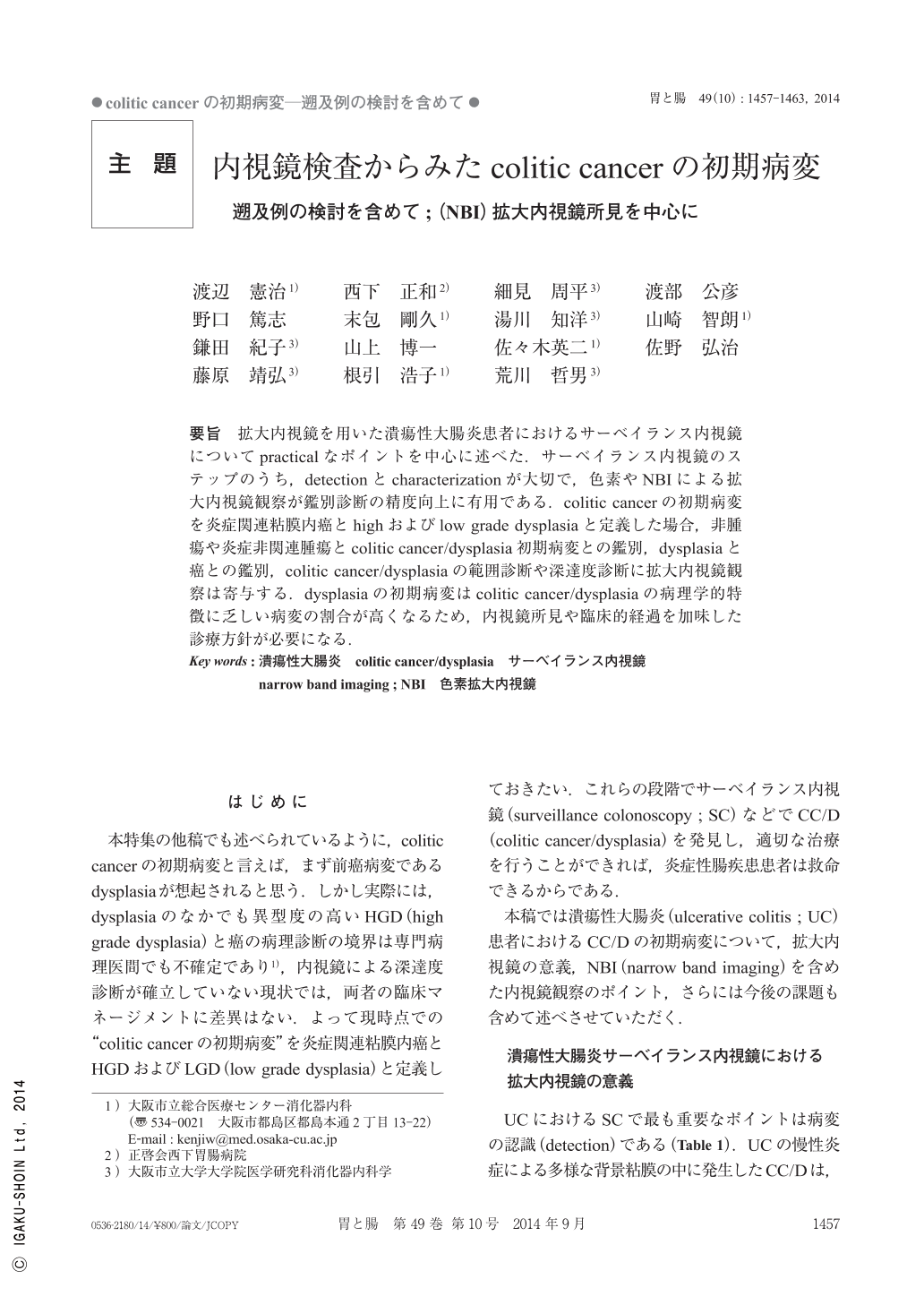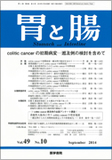Japanese
English
- 有料閲覧
- Abstract 文献概要
- 1ページ目 Look Inside
- 参考文献 Reference
- サイト内被引用 Cited by
要旨 拡大内視鏡を用いた潰瘍性大腸炎患者におけるサーベイランス内視鏡についてpracticalなポイントを中心に述べた.サーベイランス内視鏡のステップのうち,detectionとcharacterizationが大切で,色素やNBIによる拡大内視鏡観察が鑑別診断の精度向上に有用である.colitic cancerの初期病変を炎症関連粘膜内癌とhighおよびlow grade dysplasiaと定義した場合,非腫瘍や炎症非関連腫瘍とcolitic cancer/dysplasia初期病変との鑑別,dysplasiaと癌との鑑別,colitic cancer/dysplasiaの範囲診断や深達度診断に拡大内視鏡観察は寄与する.dysplasiaの初期病変はcolitic cancer/dysplasiaの病理学的特徴に乏しい病変の割合が高くなるため,内視鏡所見や臨床的経過を加味した診療方針が必要になる.
The important points and issues in clinical practice of surveillance colonoscopy using magnifying endoscopy in patients with ulcerative colitis are described in this manuscript. Magnifying endoscopic observation with narrow band imaging or chromoendoscopy is useful for precise detection and characterization, which are the key stages of surveillance colonoscopy. We defined colitis-associated intramucosal cancer, high-grade dysplasia, and low-grade dysplasia as initial CC/D(colitis-associated cancer or dysplasia). Magnifying endoscopic surveillance colonoscopy is effective for differential endoscopic diagnosis between initial CC/D and non-neoplastic lesions or sporadic neoplastic lesions and between cancer and dysplasia. In addition, it is effective for the precise endoscopic diagnosis of the expansion and depth of initial CC/D. The treatment strategy for initial CC/D should be planned using additional information regarding the endoscopic finding or clinical course, because initial CC/D tends to decrease the typical features of pathological findings.

Copyright © 2014, Igaku-Shoin Ltd. All rights reserved.


